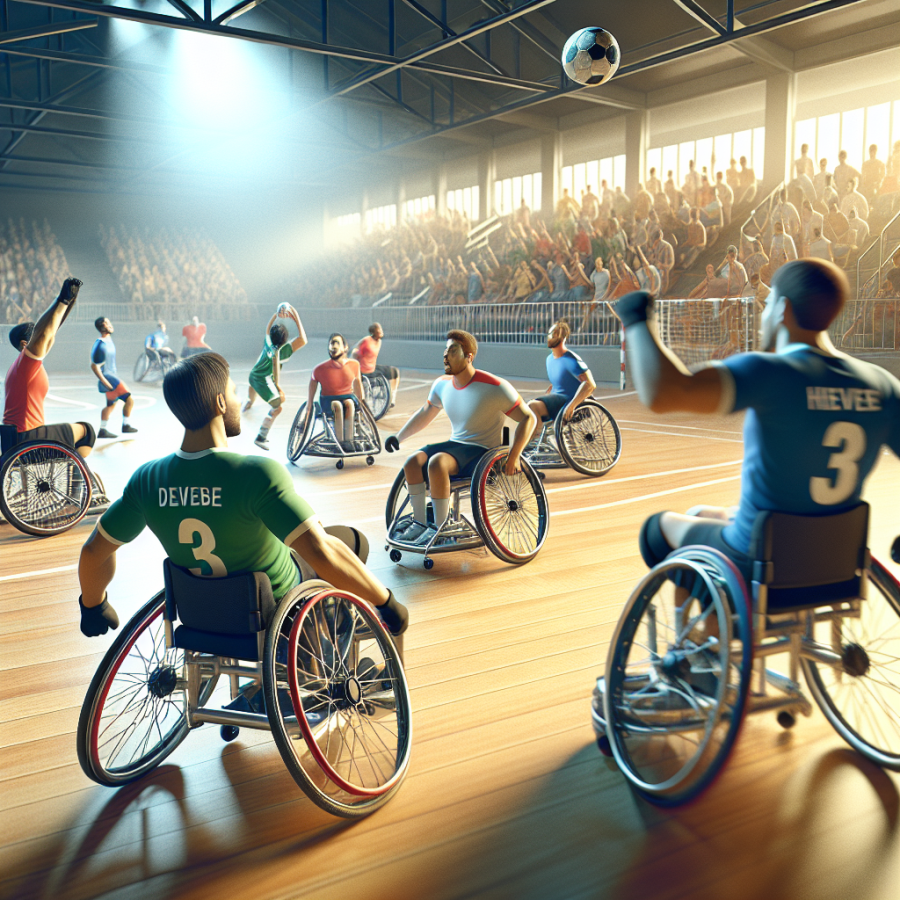The Adrenaline Rush of Wheelchair Handball: A Sport Redefining Boundaries
Wheelchair handball has emerged as a thrilling sport that defies conventional limitations and offers an adrenaline-filled experience for athletes with mobility impairments. This dynamic sport enables players to experience the intensity of fast-paced competition, showcasing their agility, skill, and determination within the boundaries of the game.
In wheelchair handball, the excitement is palpable as players deftly maneuver their chairs with precision and speed, executing swift passes and powerful shots on goal. Unlike traditional handball, wheelchair handball requires athletes to have a tight grip not only on the ball but also on their wheelchairs, which become an extension of their bodies. The sound of wheels skidding across the court mixes with the cheering of spectators, creating a vibrant atmosphere that is both inspiring and intense.
Players must develop a strong upper body to propel and control their wheelchairs, as well as a keen spatial awareness to anticipate the movement of teammates and opponents. This sport is not just about physical prowess; it is also a mental game. Athletes must display exceptional strategy and teamwork, often communicating through quick glances and hand signals to outsmart the opposition.
One of the unique aspects of wheelchair handball is the level playing field it provides. The sport is inclusive, accommodating varying degrees of mobility and function. With modifications to equipment and rules, it ensures that all participants, regardless of their disability, can compete with equal opportunity. These adaptations emphasize the core of the sport—skill and spirit—over physical limitations.
The intensity ratchets up during matches as teams press forward in attack and defend with tenacity. Goalkeepers exhibit remarkable reflexes, diving to block shots with their hands or even with their wheelchairs. Scoring a goal is a moment of exhilaration, a combination of strategy, skill, and sheer willpower.
The sport serves as an empowering platform, shattering stereotypes about what athletes with disabilities can achieve. The community around wheelchair handball is vibrant and supportive, fostering camaraderie that transcends the court. Through tournaments and exhibitions, it also raises awareness and encourages more individuals to participate, emphasizing the importance of accessibility and inclusion in sports.
Wheelchair handball's thrilling experience is not confined to the players alone; it captivates coaches, families, and spectators alike, drawing them into the heart-pounding action. It is a testament to the resilience of the human spirit and a striking example of how sports can adapt to include all athletes, offering an adrenaline rush that knows no bounds.
Read also:
Unraveling the Myth: Are Golf Balls Really Hollow?
Navigating the Court on Wheels: The Rise of Wheelchair Handball
Wheelchair handball has been gaining momentum as an exhilarating sport that promotes inclusivity and competitiveness among athletes with physical disabilities. The concept of navigating the court on wheels introduces a dynamic aspect to the game, demanding both strategic play and physical dexterity. The rise of wheelchair handball can be traced back to the desire to make sports accessible to all, regardless of mobility limitations. This expansion of the traditional handball game has not only opened new doors for players with disabilities but has also enhanced the visibility of para-sports on a global stage.
One of the most critical elements of wheelchair handball is the design and functionality of the wheelchairs themselves. Customized for agility and speed, these chairs have evolved to become an extension of the player, offering improved maneuverability and responsiveness. As players weave through the court, the chair's design becomes paramount in their ability to accelerate, turn, and even block shots.
The rules of wheelchair handball have been adapted from its able-bodied counterpart to accommodate the use of wheelchairs. For instance, players must dribble the ball after every two pushes of the wheels, which adds a layer of skill to the game. The court dimensions remain comparable to Olympic handball, yet the goalposts are adjusted to reflect the seated height of the athletes, ensuring fairness in the defensive and offensive strategies of the game.
Training for wheelchair handball involves rigorous conditioning and skill drills that focus on building upper body strength, hand-eye coordination, and teamwork. Athletes dedicate substantial time to practicing ball handling, passing, shooting, and strategic plays that can be executed seamlessly on the court. These training sessions are vital for developing the quick reflexes and tactical understanding needed to succeed in the fast-paced environment of wheelchair handball matches.
The sport’s rise can also be linked to the increasing support from national and international sports organizations, which have been advocating for the inclusion of more para-sports in competitive arenas. Wheelchair handball tournaments have started to emerge, garnering attention and encouraging participation at various levels, from local clubs to international championships. The camaraderie and sportsmanship exhibited in these tournaments highlight not just the competitive edge of the participants, but also the community and shared experiences fostered through the sport.
Furthermore, wheelchair handball has significant impacts beyond the court. It has become a tool for empowering individuals, fostering self-esteem, and challenging perceptions about the capabilities of athletes with disabilities.




